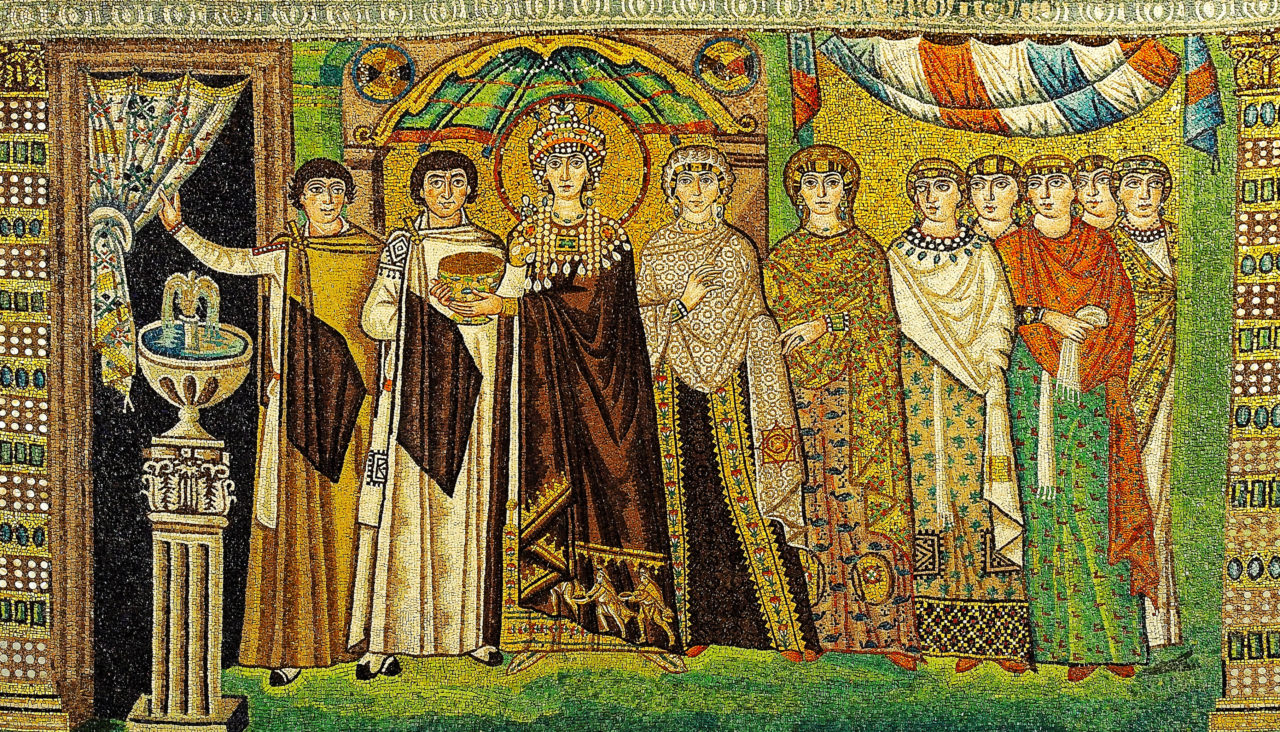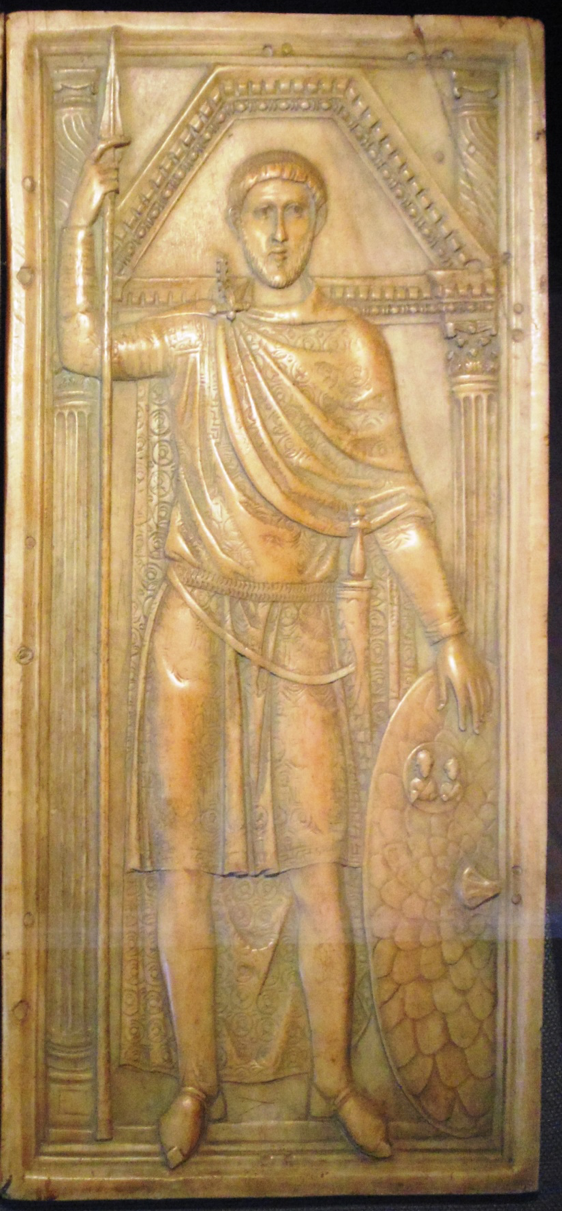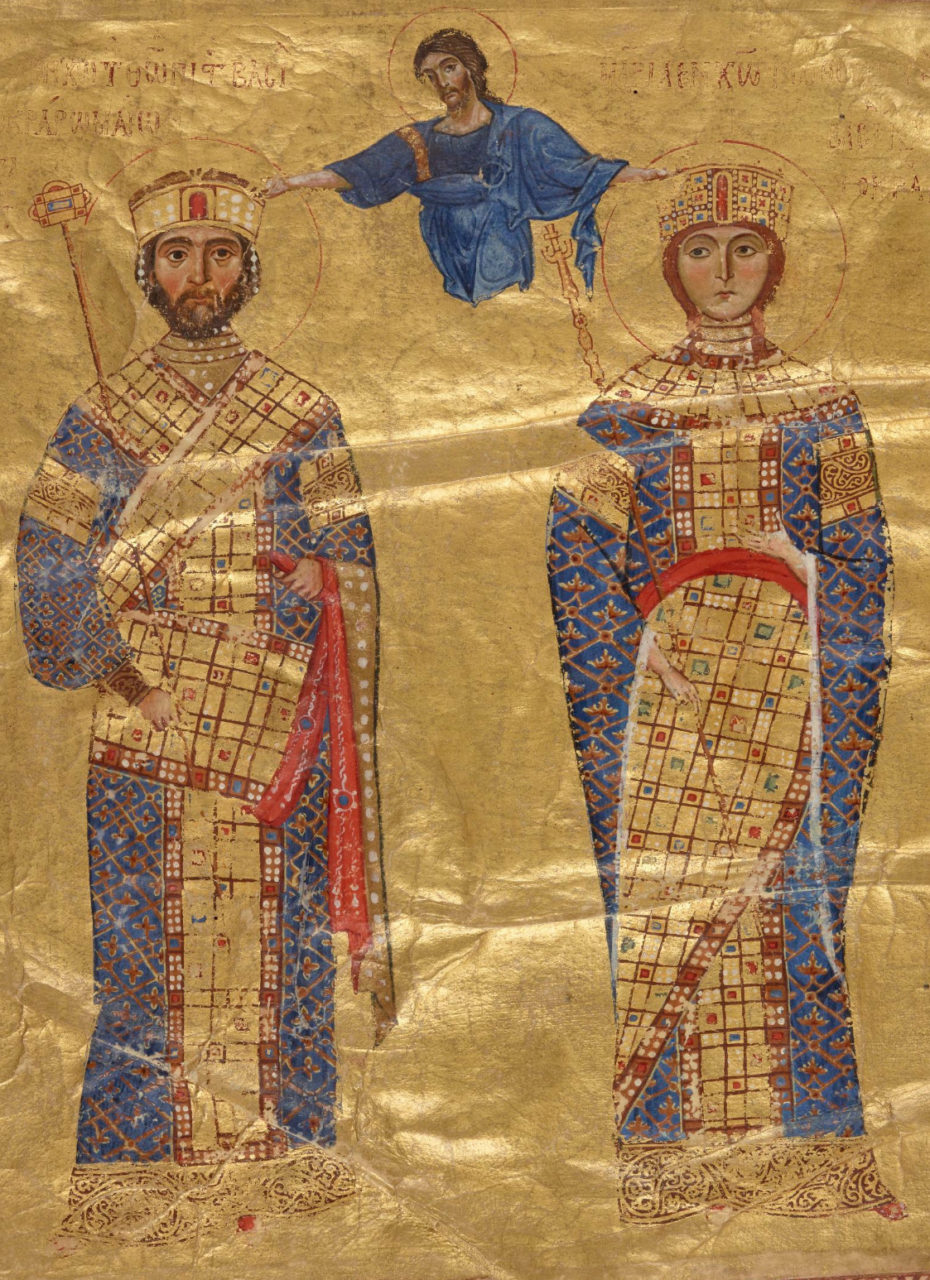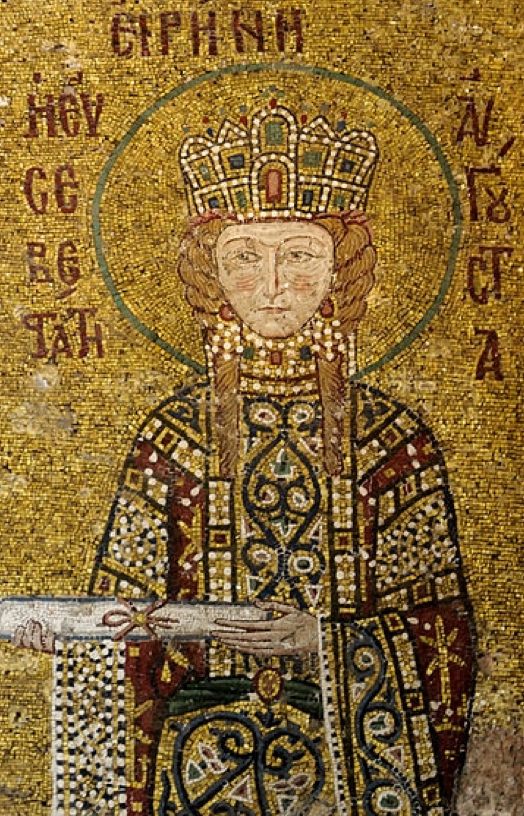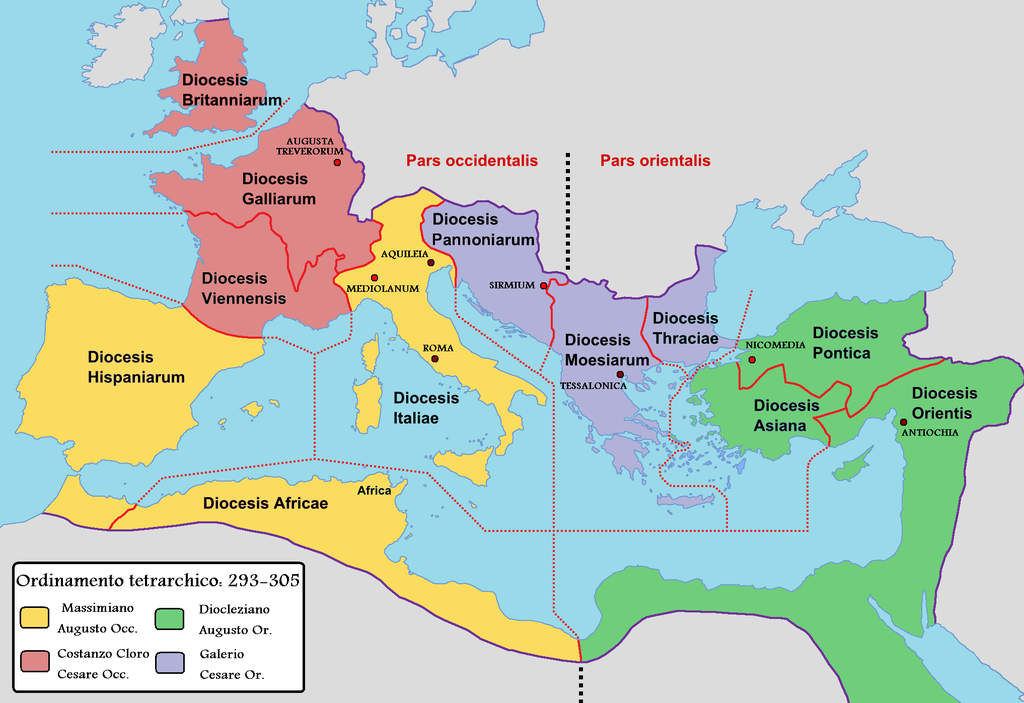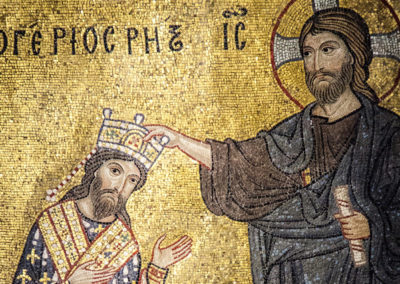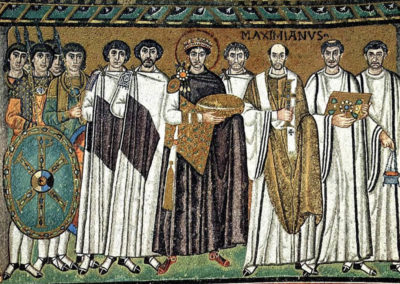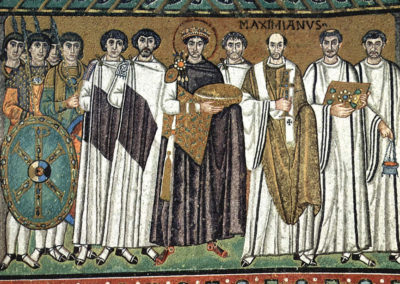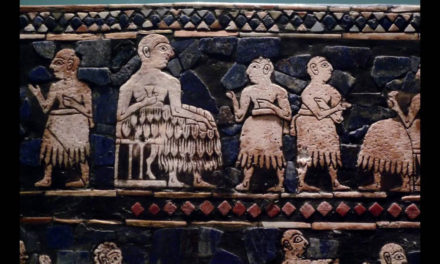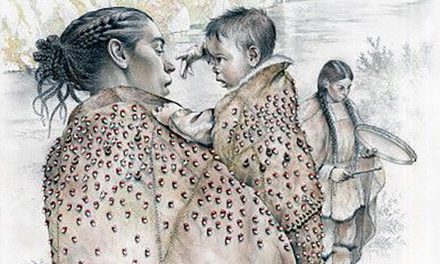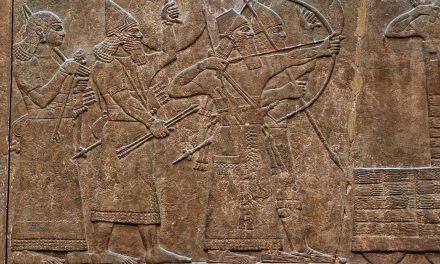OVERVIEW
Clothing during the Byzantine era was strictly regulated based on identity, status, rank, and gender. Visual and literary sources from the period provide a glimpse to Byzantine court and upper-class dress.
THE Main sources
Our knowledge about Byzantine textiles and garments is possible thanks to late written sources (9th century onward), artworks (sculptures, mosaics) and miniatures that give us an idea of the use and appearance of clothing.
Among the written sources the Book of Ceremonies of Constantine VII (913-959) is the most famous. The work dated from the 10th century describes in detail the religious and secular ceremonies of the court. As an appendix to this work are the Three Treatises on Imperial Military Expeditions which have usually been regarded as separate from the main body of De cerimoniis. The third section contains information on Byzantine clothing and the garments worn by members of the court and the emperor (Moffatt; Haldon).
Another written source on ceremonial life is the Kletorologion or Banquet Book of Philotheos dated to 899 (Parani). It gives us information about offices and officials and was compiled during the reign of Leo VI in the year 899. The Kletorologion has come down to us as part of the second book of the De cerimoniis, but it was an independent treatise and not part of Constantine’s book. The Kletorologion is divided into four sections and the latter contains information about court banquets throughout the year and what men wore at court (Bury).
The 14th century Treatise of Pseudo Kodinos give us insight into the hierarchies and ceremonials of the court in the Palaeiologan period (1261-1453). It was probably written at the beginning of the 15th century during John VI Kantakouzenos empire (1347-1354) and consists of twelve chapters. It is a valuable source that tell us about the hierarchy, the clothing of the dignitaries and the celebrations. The ceremonial protocol corresponds to that established by Michael VIII Palaiologos and is an updated Book of the Ceremonies of Constantine Porphyrogennetos (Verpaux).
The most problematic issue is the terminology used to define the garments because in some cases there are different terms which seems to indicate the same dress. For example, Middle Byzantine sources use at least nine terms for tunic (chiton, himation, sticharion, kondomanikion, divetesion, kamision, sabanion, kolobion, abdia) and three other terms such as pelonion, paragaudion and spekion might refer to this garment. For this reason, it is very difficult to have a clear idea of the different garments that were worn at the time and even in some cases when one can rely on figurative sources, these are sometimes not very accurate (Ball).
The differences between a simple tunic or a paragaudion might be difficult to identify, but even today we use different words to refer to a pair of trousers such as jeans, khakis, cargo pants. They are the same kind of clothing but still we differentiate them, and we wore them on different occasions (Ball).
SOCIAL MEANING OF CLOTHING
In Antiquity and the Middle Ages there was a dress code and the wearing of clothes was strictly regulated to identify the rank, profession and gender of the wearer. Most of the information we have concerns court clothes since written and figurative sources were usually commissioned by the aristocracy and the imperial court. Nevertheless, some studies had tried to focus on non-elite dress too, to offer an idea of what kind of garments were used by common people (Ball; Morgan).
Images from the 8th to the 12th century are a good figurative source and allow us to recognise the clothing and accessories adopted by the Byzantine court (Ball). During the medieval period, in the East as well as in the West, the depiction of a person was useful in communicating his or her status and consequently the clothing played an important role in defining it. These sources are very important, but care must be taken in their analysis as sometimes the clothes depicted may lack of accuracy (Ball).
Colour has always played an important role in defining social status, as the process of dyeing (or bleaching) was very expansive in terms of time and resources. The brighter or more intense the colour, the more precious the fabric, which was intended for the court or the imperial family. Especially purple was the imperial color par excellence and its production, sale and use were regulated since the Theodosian empire (Carile). Purple was a secretion produced by a murex, the most common Mediterranean murexes used were Murex brandaris L. and Mures trunculus L. which could give a colour between dark and bright red (Longo).
Fig. 1 - Artist unknown. Toga Diagram, ca. 2010. Source: Roman Clothing and Fashion
Fig. 2 - Artist unknown. Toga Diagram II, ca. 2010. Source: Roman Clothing and Fashion
From the 5th century onward, guilds were established of mulirieguli or conchyliaroi who produced purple dye, and porphyrobaphei or purpurarii who dyed textiles (Carile). The manufacture and export of these fabrics was strictly controlled and by the 7th century the less valuable purple, extracted from an insect (blattia), was reserved for the court and purple bands or clavi could be used by everyone. With the empire of Leo VI, a new provision was issued to forbid ordinary people from wearing clothes decorated with purple inserts (Carile).
The attempt was to make correlate the social status with the availability of financial resources. The control of the economic system represented the desire to put society in order through a hierarchy, where the colour symbolised the rank and social importance of the wearer. The focus shifted from financial availability to a symbolic meaning of the color that recalled the sacredness and divine nature of imperial power, to legitimised it (Carile). From a magical and symbolic point of view, the color purple was also linked to the sacrifice of Christ and his blood (Carile). For this reason, the use of purple-dyed fabrics was strictly forbidden to the common people and only the emperor could wear it, as shown by the new provision issued by Leo VI (Carile).
EARLY BYZANTINE PERIOD – 4TH-7TH CENTURIES
Fig. 3 - Artist unknown (Roman). Diptych of Constance III, ca. 417. Halberstadt: Halberstadt Cathedral. Source: JSTOR
Fig. 4 - Artist unknown. Missorium of Theodosius I, 388 AD. Madrid: Real Academia de la Historia. Source: Dittici consolari tardoantichi
For these centuries we have mainly figurative sources such as mosaics, diptychs and miniatures. The well-known imperial panels in Ravenna are the richest and most detailed source on Byzantine fashion for the Early Medieval period.
From Late Antiquity the earlier Roman fashion was followed, and clothing recalls the same shapes and drapes of the stola for women and toga for men (Croom). The stola was like a wide tunic and was the symbol of female clothing and was worn by matrons to symbolize their respectability and morality. In the Late Antiquity and Early Medieval period women adopted instead an unbelted tunic called dalmatic (Croom). The style of toga (a long cloth draped on the shoulders and around the body) with a wide flat balteus and the sinus held by the left arm continued into the 4th century in menswear (Figs. 1-2) (Croom). The diptychs (Fig. 3) are the main figurative sources of this trend, where the consuls wore the toga over a tunic. The choice of this attire was the desire to associate themselves with the splendor of the Roman Empire and to demonstrate their relationship with the new imperial power (Delbrueck).
The balteus was the section hanging down the left side of the body which was again pulled out over the shoulder to lie over the top layers (Fig. 1). This feature became longer and more visible across the front of the body. From the 4th century the appearance of the balteus changed: it was no longer folded into one wide smooth band but was arranged in many small folds (Croom). The sinus was the cloth draped over the left front of the body and was folded to form a wide band. It was created by the end section of the cloth which was brought across the back and under the right arm and then was brought diagonally across the body (Fig. 2) (Croom).
In the diptych of Constance III from Rome dated to the 417 (Fig. 3), the consul is depicted on the recto (the front) with the triumphal toga, the sceptre and the mappa (the cloth with which he starts the games in the arena) flanked by two senators. On the verso (the reverse side) he wears a chlamys as a patrician with two officials (Delbrueck).
The Missorium of Theodosius I (Fig. 4), a large ceremonial plate dated 388, testifies to a military-style clothing, which was adopted by emperors for at least the next four centuries. Emperor Theodosius wear a tunic with long sleeves richly decorated on the shoulders and above a chlamys secured by a disc fibula. He wears campagi (purple imperial shoes), which were shoes made of leather and tied at the instep (Delbrueck). These were military shoes and were usually worn by everyone, but those used by the emperor were dyed purple (D’Amato). The emperor also had a crown, encrusted with precious stones and pearls. The same model of crown was already used by Constantine and later emperors with some modifications in the Middle Byzantine period (843-1204).
In the mosaics of St Vitale (549), Emperor Justinian had essentially the same attire as Theodosius: a short tunic under a chlamys, as in the contemporary military clothing; tight trousers covering the whole leg including the foot and the campagi (Fig. 5). The chlamys is decorated with a tablion, a rectangular purple panel usually ornamented with gold thread (Ball). Justinian wears a diadem decorated with precious stones and a disc fibula with a red inlay framed by a row of pearls from which three white tear-drop pendants are suspended.
The tunic or chiton was very common and used by both men and women. It was a simple T-shaped garment of wool or linen with sleeves (Fig. 6). In military clothing it usually reached the knees and was tightened by the cingulum militiae (belt). It was woven in a single piece, folded in half and sewn only along the sides. The tunic was worn over trousers and in cold season an inner tunic called linea or kamision was worn (D’Amato).
Some variants of the tunic were the dalmatica which probably originated in Dalmatia and became common during the 3rd century. It was a long tunic with wide sleeves and was worn unbelted and in combination with a cloak (Croom). Two other types of tunics were the sticharion which was a richly decorated tunic and the colobium a long tunic with short or no sleeves (D’Amato).
Fig. 5 - Artist unknown. Justinian Mosaic, 549. Ravenna: St Vitale. Source: The Byzantine Legacy
Fig. 6 - Designer unknown (Egyptian). Tunic decorated with purple embroidery, 4th-5th century. Linen and wool. Source: Roman Military Clothing
Fig. 7 - Artist unknown. Theodora Mosaic, 549. Mosaic. Ravenna: Basilica San Vitale. Source: Wikimedia Commons
Fig. 7 - Artist unknown. Theodora Mosaic, 549. Ravenna: St Vitale. Source: The Byzantine Legacy
Fig. 8 - Artist unknown. Diptych of Empress Ariadne, ca. 500. Carved ivory panel. Florence: Museo Nazionale del Bargello. Source: L'oreficeria nell'impero di Costantinopoli : tra IV e VII secolo
The Justinian panel is flanked by the one where his wife is portraited as the empress (Fig. 7). The most interesting aspect of Theodora’s clothing is that she wore a garment usually intended for men: the chlamys. It was the most significant garment in military clothing and was later adopted as an expression of imperial power, so the anomaly in the Theodora’s outfit can easily be explained by the fact she was empress and wife of emperor Justinian (Ball). Theodora’s fibula has gemstones and pearls like Justinian’s, but it is of the crossbow type. Her crown is more elaborate, with rows of pearls, rectangular and oval settings alternating with green and red inlays and she wears also a jewelled collar decorated with pearls (Stoltz). But Theodora is not the only woman who has been depicted wearing a chlamys, since in the previous century the empress Ariadne (474-515) was portrayed on diptychs now in Florence and Vienna wearing this military garment. On these diptychs the intention to represent her as the holder of power is more evident, since like the emperors she holds the sceptre and the imperial orb in her hands (Fig. 8) (Baldini Lippolis).
The most common chlamys was a hip-length, semi-circular cloak limited from the 4th century to soldiers, officers in change of civil functions. The cloaks of senior military officials were longer, ankle-length and were adorned on the front and back with square embroidered panels called tablion. The cloak was pinned by a brooch that could be a crossbow fibula or a disc fibula (D’Amato).
The ordinary costume of an aristocratic woman is attested only in the earlier Diptych of Stilicho (400), where his wife Serena is depicted (Fig. 9). In her portrait she wore two tunics: an inner tunic with long tight-fitting sleeves and a wider tunic over which a jewelled belt was fastened. This fashion imitates that of the men of the 4th century. Her cloak is called palla, a rectangular cloth which could be used to cover the head (Delbrueck).
Stilicho wore the same military attire which was adopted in the following century by Justinian. From the first half of the 4th century tunics were decorated with square or circular roundels on the upper arm and on the lower front and back of the tunic. The same style of decorated tunic continued into the following centuries and sometimes these motifs were all over the fabric as in that of Stilicho (Fig. 10) (Croom).
A later drawing of the Book of Job dated 615-640 depicts emperor Heraklios (610-641) and his wife, sister and daughter. Here the emperor wore a belted short tunic with a belt still reminiscent of military clothing and has a bejewelled diadem on his head. The three women wear a dalmatic (a wide belted tunic) that is decorated with bejewelled collars and girdles. This miniature shows us that until the 7th century, clothing is gendered: men adopt clothing derived from the military world and women have long tunics and jewellery to distinguish themselves from men (with few exceptions such as the empresses Theodora and Ariadne) (Ball).
The Codex Iustinianus give us information on imperial jewellery because it regulates the combined use of emeralds, hyacinths and pearls. As with purple fabrics, it was very important to regulate the use of these precious materials because of their symbolism (Stoltz).
Fig. 9 - Artist unknown (Roman). Diptych of Stilicho, copy of 5th century CE original. Plaster cast. Cambridge: Harvard Art Museum, BR22.92. arvard Art Museums/Busch-Reisinger Museum, Museum Purchase. Source: Wikimedia
Fig. 10 - Artist unknown (Roman). Diptych of Stilicho, copy of 5th century CE original. Plaster cast. Cambridge: Harvard Art Museum, BR22.92. Harvard Art Museums/Busch-Reisinger Museum, Museum Purchase. Source: Wikimedia
The gender distinction was also made through the greater richness of the crown or headdress and the jewellery. From the 4th century women onwards, women had showy headdress embellished with gold bands with precious stones or pearls. Between 4th-5th century, hair was separated in the middle, sometimes divided in two plaits, and gathered at the neck (Fig. 11) (Emmanuel). In the second type hairdo the two plaits encircle the head and could be decorated with pearls like a crown (Emmanuel). These hairstyles are found in sculptures from this period as well as in representations of women in frescoes and miniatures (Emmanuel; Baldini Lippolis).
The portrait of Theodora in Castello Sforzesco is an example of 5th century (Fig. 12). Emmanuel explains the bulge on the head as plaits which are taken up to the summit of the head and covered by a silk-like material, like a bonnet. Baldini Lippolis also explains the particular shape of the headdress with the habit of dividing the hair in two locks (Fig. 13). The crown placed on it consists of two parts: a round one and a band placed transversely on the round part of the diadem (Emmanuel).
Fig. 11 - Artist unknown. Portrait of Aelia Flacilla, 4th quarter 4th century. Marble. Paris: Cabinet des Médailles, inv.57.13. Source: Hairstyles and Headdresses of Empresses
Fig. 12 - Artist unknown. Portrait of Empress Theodora, 5th century. Milan: Museo del Castello Sforzesco. Source: L'oreficeria nell'impero di Costantinopoli : tra IV e VII secolo
Fig. 13 - Artist unknown. Portrait of an Empress, ca. 490-510. Paris: Musée du Louvre. Source: L’oreficeria nell’impero di Costantinopoli tra IV e VII secolo
Examples from the 6th century include Theodora wearing a crown with prependulia (pendants) encrusted with sapphires, rubies and emeralds and the central bezel has two diamonds (Fig. 7) (Avgoloupi). Figurative sources show us that not only the empress wore a rich headdress but also women of important families such as Serena, Stilicone’s wife (Fig. 9) (Baldini Lippolis).
This type of jewellery was considered inappropriate for Christian women, which is way the Virgin and saints usually didn’t wear them and, with few exceptions, earrings were only worn by lay people such as empresses and women of the court. In the catalogue of Byzantine jewellery made by Baldini Lippolis are identified nine types of earrings and according to it, those worn by Theodora are the 4° type with a square emerald, a pearl and a drop-shaped sapphire (Baldini Lippolis; Avgoloupi).
MIDDLE BYZANTINE PERIOD – 8TH TO 12TH CENTURIES
Middle Byzantine imperial dress represents a change from the Early Byzantine period. From the 4th to the 7th centuries the emperor and the empress were easily distinguishable from each other, and this distinction began to fade in the 8th century (Ball). The evolution of this non-gendered imperial dress can be explained by the renewed interest in the imperial ceremony and the public role of the imperial couple, as the written sources testify. Another motivation was dynastic succession and regency, as empresses such as Zoe and Irene took over and ruled in place of their younger sons. The increase of diplomatic contacts necessitated the creation of a symbol of Byzantine power in the Mediterranean world through clothing too (Ball).
During these centuries the dalmatic changed and was called the divetesion. The divetesion is always described as silk and long and was worn by the emperor and by the most important courtiers. It was a long tunic with large sleeves and tight by a belt at the waist. It was usually associated with the sticharion or chiton for ceremonial purposes. Pseudo-Kodinos identify the divetesion with the sakkos, the garment used by the emperor on coronation day. This is why by the XIV century the divetesion had probably been transformed into the sakkos (Avgoloupi).
Fig. 14 - Artist unknown. Mosaic of Emperor Constantine IX in the Hagia Sophia, 1042–1055. Istanbul: Hagia Sophia. Source: Wikipedia
Fig. 15 - Artist unknown. Empress Zoe Mosaic in the Hagia Sophia, 1028–1034. Istanbul: Hagia Sophia. Source: Wikipedia
Fig. 16 - Artist unknown. Nikephoros III Botaniates and Maria of Alania, between 1074-1081. Paris: Bibliothèque nationale de France. Source: Wikipedia
Throughout the Middle Byzantine period the loros was worn by both the emperor and the empress. The loros was like a long scarf, embroidered with gold and encrusted with pearls and jewels, crossed over the torso. This particular type of garment was derived from the trabea triumphalis the gold embroidered purple toga worn by Roman consuls. It became essential in imperial representation in the Middle Byzantine period and the earliest pictorial representations of the loros was found on coin-effigies of Justinian II (669-711) (Parani).
During the Middle Byzantine period there were essentially two kinds of loros the X type and the “pullover” type, which we can see in the mosaics of St Sophia where Constantine IX Monomachos (1042-1055) and Zoe (1028-1050) are depicted wearing matching imperial robes (Figs. 14-15). Their loros was not crossed over the chest but had a head opening, and under it they wore a divetesion with circular armbands. Another example in which an imperial couple dresses in the same way can be found on a reliquary of St. Demetrios (1059-67) where Constantine Doukas (1059-1067) and Eudokia Makrembolitissa (1057-1071) both wear a loros. Once again there are no gender distinctions in their clothing (Ball).
An exception in the non-gendered imperial attire of the Middle Byzantine period is found in the Homilies of John Crysostom (Fig. 16) where Nikephoros III Botaneiates (1078-1081) and Maria of Alania (1071-1081) wear identically patterned X type loroi and armbands on divetesions decorated with lozenges containing foliate designs inside. Her sleeves are cut with long wide openings while his sleeves have a narrow cuff at the wrist. Her loros has a shield shape, which modern scholars have recognised as the thorakion, which Parani describes as a sewn garment, no longer crossed (Parani). Rudt de Collenberg stated that it is not possible to say which garment the thorakion came from, but for Ball it was not a different garment but essentially a loros whose end was blocked at the waist (Ball), so the draped fabric had a shield-like shape (Ball; Rudt de Collenberg). The figurative sources we have of this garment are very difficult to interpret because it is not always depicted in the same way, sometimes it looks like the last part of the loros, a separate garment, or it looks like a print on the fabric of the tunic (Rudt de Collenberg).
The first depiction of the thorakion is found in the Menologion of Basil II dated between 978-984, then it appears at the end of 10th century and its use was essentially limited to this century, more or less until the sack of Constatinople in the year 1204 (Rudt de Collenberg). Nikephoros III wears his loros crossed over his chest and wrapped around the back. Although they, like other Middle Byzantine imperial couples, wore non-gendered imperial robes, the belted loros is an exclusively female style. The belting of the loros by women is explained by Ball to help support its weight and not to differentiate their gender (Ball).
The female crown developed like the one worn by Zoe (1028-1050) in the mosaics of St Sophia (Fig. 15). She wore a modiolos a development of the muralis crown, a type of crown also worn by Irene of Hungary (1104-1134), who wore a bonnet under it (Fig. 18). The crown is called muralis because it resembles a crenelated castle, so it has two horizontal bands adorned by precious stones and triangular motifs at the top (Avgoloupi). According to the catalogue made by Baldini Lippolis, Zoe wore the 6° type of earrings which is a ring of pearls. Empress Irene probably wore 5° type of earrings very similar to the Roman crotalia with a carnelian and three pearl pendants (Baldini Lippolis).
Towards the end of the 11th century with the Komnenian dynasty the emperor’s crown changes to a hemispherical shape with prependoulia and was surmounted by a cross. It is first attested in art in the portrait of Johannes II Komnenos (1118-1143) (Fig. 17) and from his time this type of crown replaced the previous open one in imperial portraiture (Parani). This kind of crown is called kamelaukion a term which is usually used to indicate the imperial headgear, but it was a helmet used by soldiers and civilians (D’Amato 2015). Obviously the one worn by the emperor was more precious and decorated by enamels and pearls (Avgoloupi). Scholars proposed many hypotheses on the origin of this type of crown: D’Amato states that the costume of the kamelaukion has passed by the Scythians and Iranian peoples and others propose to see a similarity with the crowns of Parthian kings (Piltz; D’Amato 2015).
Sassanian and Persian influence in elite dress
Fig. 19 - Artist unknown. Theodore Metochites Mosaic, ca. 1315-20. Contantinople: Chora Church. Source: Wikipedia
Fig. 20 - Artist unknown. Helena Dragaš in portrait with her husband Manual II, ca. 1404. Paris: Louvre. Source: Wikipedia
The aristocracy of the provinces such as Kastoria, Cappadocia, Georgia and Armenia wore brocade kaftans (kabbadion) and turbans. Kaftans were long robes worn over tunics and differed from the divetesion in that they opened at the front allowing the wearer to move more easily and to ride horses. The kaftan dates back to Sasanian and Persian periods, becoming under the Umayyad caliphate the garment worn at court. The round or rotae motif came from Sasanian art and the Byzantines imitated and adopted these decorations in their textile production. The turban played a prominent role in Cappadocian dress but did not appear in Constantinople until at least the 12th century. The most notable example in Byzantine art is the portrait of Theodore Metochites in the Chora monastery dated 1315-20 (Fig. 19) (Ball).
From 13th onward – Late Byzantine period
Imperial dress changed again as the empire entered the 13th century and was again distinguished according to gender. The sakkos a loosely belted tunic become the main garment of the male clothing. This garment was a form of tunic that in the late Roman empire symbolised ascetism or penance (Morgan). In the Late Byzantine period this tunic wore by the emperor is described as black and was complemented by the crown, the red shoes, the labarum (sceptre) and the akakia (purple silk roll) (Parani).
Unlike the chlamys, the loros continued to be used in imperial costume but it is difficult to understand its development in the 13th century because portraits became more conventional and less accurate in clothing depiction. Parani stated in 14th century there was the simplified loros which through an analysis of the images appeared to be sewn onto the tunic (Parani).
Women instead began to wear western styles such as cutaway sleeves and higher pointed crowns. Until the Late Byzantine Period most empresses were not shown wearing such dresses as empress Helena Dragaš (1392-1425) in the portrait with her husband Manuel II (1391-1425) (Fig. 20) (Ball), but we can find the first image showing a woman wearing such a dress in the capital in the earlier mosaic in St Sophia where Irene of Hungary (1104-1134) is depicted with John II Komnenos (1118-1143) (Figs. 17-18). As we can see in this portrait, despite the adoption of a western style the loros was not abandoned but became more fitted like a bodice. On the other hand, the shield-like element (thorakion) characteristic of female costume between 11th-12th centuries disappeared in the late period (Ball).
References:
- Avgoloupi, Eleutheria. Simbologia delle gemme imperiali bizantine nella tradizione simbolica mediterranea delle pietre preziose (secoli I-XV d.C.). Spoleto: Fondazione Centro Italiano di studi sull’Alto Medioevo, 2013. http://www.worldcat.org/oclc/1026211521
- Baldini, Lippolis Isabella. L’oreficeria nell’impero di Costantinopoli tra IV e VII secolo. Bari: Edipuglia, 1999. http://www.worldcat.org/oclc/440792873
- Ball, Jennifer. Byzantine Dress, Representations of Secular Dress in Eight to Twelfth Century Painting. New York: Palgrave Macmillan, 2005. http://www.worldcat.org/oclc/1047636763
- Bury, John Bagnell. The Imperial Administrative System in the Ninth Century, with a revised text of the Kletorologion of Philoteos. New York: Burt Franklin, 1911. http://www.worldcat.org/oclc/1120831673
- Carile, Antonio. Produzione e usi della porpora nell’impero bizantino in La Porpora, realtà e immaginario di un colore simbolico, atti del convegno (Venezia 1996), a cura di Oddone Longo. Istituto Veneto di scienze lettere e arti, 1998. http://www.worldcat.org/oclc/496104409
- Croom, Alexandra. Roman Clothing and Fashion. Stroud: Amberley, 2010. http://www.worldcat.org/oclc/1000811399
- D’Amato, Raffaele and Graham Sumner. Roman Military Clothing, AD 400-640. Oxford: Osprey, 2005. http://www.worldcat.org/oclc/773797167
- D’Amato, Raffaele. “Old and New Evidence on the East-Roman Helmets from the 9th to the 12th centuries” in Acta Militaria Mediaevalia, XI, Kraków – Sanok – Wrocław (2015): 27-157.
- Delbrueck, Richard. Dittici consolari tardoantichi, a cura di Marilena Abbatepaolo. Bari: Edipuglia, 2009. http://www.worldcat.org/oclc/645220057
- Emmanuel, Melita. “Hairstyles and Headdresses of Empresses, Princesses, and Ladies of the Aristocracy in Byzantium” in Deltion tes Christianikes Archaiologikes Hetaireias, Ser. 4, vol. 17 (1993/94): 113-120. http://www.worldcat.org/oclc/1033868498
- Haldon, John F. Constantine Porphyrogenitus. Three treatises on imperial military expeditions. Vienna: Verlag der Österreichischen Akademie der Wissenschaften, 1990. http://www.worldcat.org/oclc/476316624
- Longo, Oddone. La zoologia delle porpore nell’antichità greco-romana in La Porpora, realtà e immaginario di un colore simbolico, atti del convegno (Venezia 1996), a cura di Oddone Longo. Venice: Istituto Veneto di scienze lettere e arti, 1998. http://www.worldcat.org/oclc/496104409
- Moffatt, Ann, Tall Maxeme (translated by). Constantine Porphyrogennetos: The Book of Ceremonies. Leiden-Boston, Brill, 2017. http://www.worldcat.org/oclc/1277368380
- Morgan, Faith Pennick. Dress and Personal Appearance in Late Antiquity: The Clothing of the Middle and Lower Classes. Leiden-Boston: Brill, 2018. http://www.worldcat.org/oclc/1029506763
- Parani, Maria G. Reconstructing the Reality of Images. Byzantine Material Culture and Religious Iconography (11th-15th centuries). Leiden-Boston: Brill, 2003. http://www.worldcat.org/oclc/264984688
- Piltz, Elisabeth. Kamelaukion et mitra. Insignes byzantins impériaux et ecclésiastiques. Stockholm: Almquist & Wiksell International, 1977. http://www.worldcat.org/oclc/754637870
- Rudt, Collenberg H. de. Wipertus, “Le Thorakion. Recherches iconographiques” in Mélanges de l’Ecole française de Rome, Moyen-Age, Temps modernes 83, n°2 (1971): 263-361.
- Stoltz, Yvonne. “The Evidence for Jewellery Production in Constantinople in the Early Byzantine Period” in Intelligible Beauty. Recent research on Byzantine jewellery, eds Christ Entwistle, Noël Adams, 33-39. London: British Museum, 2010. http://www.worldcat.org/oclc/320801829
- Verpaux, Jean. Pseudo-Kodinos, Traité des Offices. Paris: Editions du Centre National de la Recherche Scientifique, 1976. http://www.worldcat.org/oclc/4816312
Historical Context
Wikipedia: Byzantine Empire
Rulers:
- 306–337 – Constantine I
- 395–408 – Arcadius
- 402–450 – Theodosius II
- 527–565 – Justinian I
- 610–641 – Heraclius
- 717–741 – Leo III
- 797–802 – Irene
- 867–886 – Basil I
- 976–1025 – Basil II
- 1042–1055 – Constantine IX
- 1081–1118 – Alexios I
- 1259–1282 – Michael VIII
- 1449–1453 – Constantine XI
Roman empire during Tetrarchy. Source: Wikimedia
Events:
- 293 AD Tetrarchy established with Diocletian, Maximianus Herculeus, Constantius I, Galerius Maximianus
- 312 AD Constantine victory over Maxentius
- 313 AD Edict of Milan
- 324-330 AD Constantinople became the new capital of the Roman Empire
- 379 AD Theodosius I became emperor
- 395 AD Dead of emperor Theodosius I which sign the division in Eastern and Western Empire
- 410 AD Sack of Rome
- 457 AD Leonid dynasty (East Empire)
- 493 AD Theodoric the Great ruled the Ostrogothic kingdom in the Italian peninsula
- 527 AD Justinian became Emperor
- 532 AD Nika revolt in Constantinople
- 534-535 AD Gothic War between the East Roman Empire and the Ostrogothic Kingdom of Italy
- 568 AD Lombard reign was established in the Italian peninsula
- 584 AD Byzantine territories in the Italian peninsula are under the exarchate of Ravenna
- 610 AD Heraclius is the new Emperor of the Eastern Roman Empire and defeated the Sasanian army
- 712 AD Liutprand king of Lombards
- 717 AD Leo III the Isaurian became emperor of the Byzantine empire
- 726 AD Iconoclastic controversy
- 751 AD Lombards conquered Ravenna exarchate
- 756 AD Pepin III recover territories in Italy from Lombards
- 768 AD reign of Charlemagne
- 843 AD Macedonian Dinasty (Byzantine Empire) and ending of the iconoclastic controversy
- 862 AD Otto I became emperor of the Holy Roman Empire
- 913 AD Constantine VII Porphirogennetos became emperor
- 972-973 AD Otto II became Holy Roman Emperor and married Theophanu, niece of the Byzantine emperor John I Tzimiskes
- 1054 AD East-West Schism between the Catholic church and Eastern Orthodox Church
- 1071 AD Robert the Guiscard conquered Bari
- Seljuk Empire defeated the Byzantine troops of Romanos IV in Manzikert
- 1095 AD First Crusade
- 1109 AD The crusaders now rule the Latin kingdom of Jerusalem, the principality of Antioch and the counties of Tripoli and Edessa
- 1147/49 AD Second Crusade
- 1189/92 AD Third Crusade
- 1204 AD Conquest of Constantinople by Crusaders and the Latin Empire is established in Constantinople
- 1259 AD Palaeologue Dinasty (Byzantine empire)
- 1261 AD Michael Palaiologos reconquered Constantinople – the Latin Empire ends
- 1330 AD Victory of the Serbian army at Velbazhd
- 1453 AD the Ottoman Empire conquered Constantinople
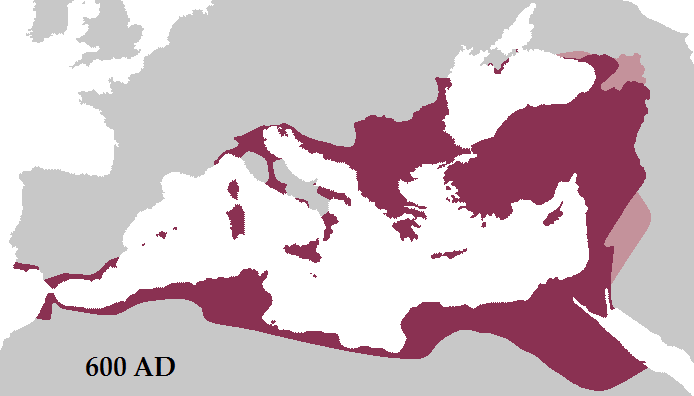
Byzantine Empire 600 AD. Source: Wikipedia

Europe 814 AD. Source: Wikipedia
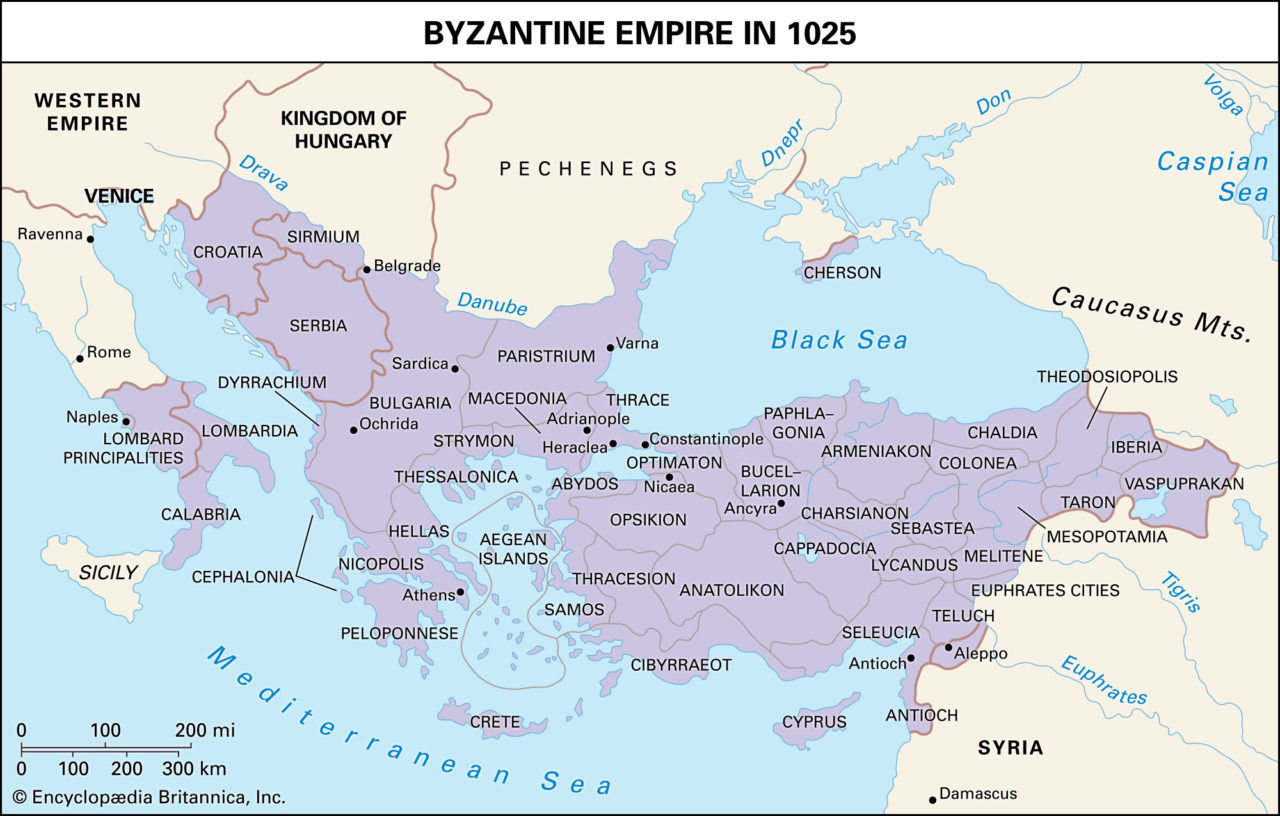
Byzantine Empire in 1025. Source: Encyclopaedia Britannica
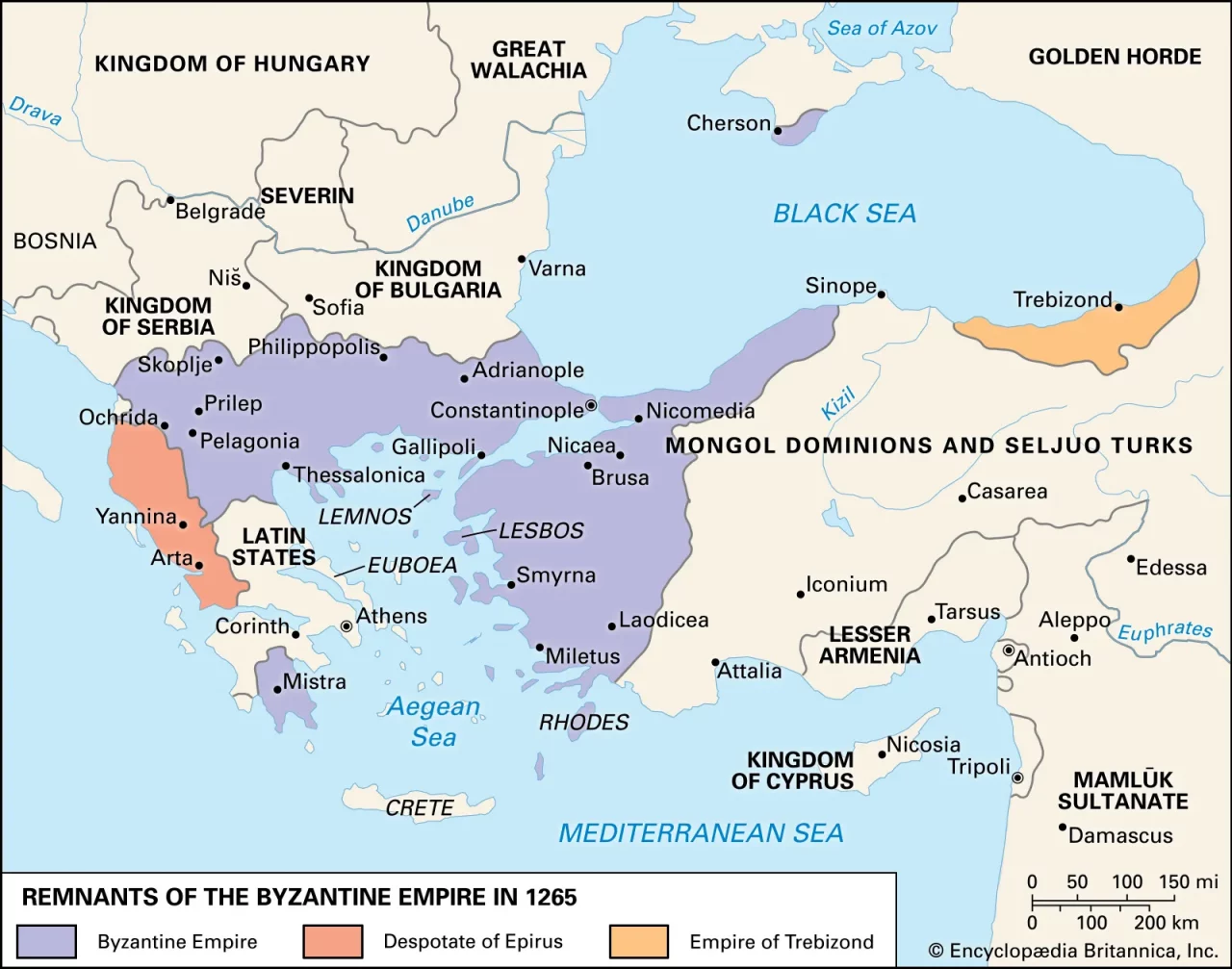
Byzantine Empire in 1265. Source: Encyclopaedia Britannica
Primary/Period Sources
Resources for Fashion History Research
To discover primary/period sources, explore the categories below.
Have a primary source to suggest? Or a newly digitized periodical/book to announce? Contact us!
Digitized Primary/Period Sources
Secondary Sources
Also see the early middle ages overview page for more research sources… or browse our Zotero library.
Online
Books/Articles
- Jaana Seppälä’s Pocket Museum:
- Salon of The Dames – Inspiration | Byzantine Fashion – includes work by contemporary designers








